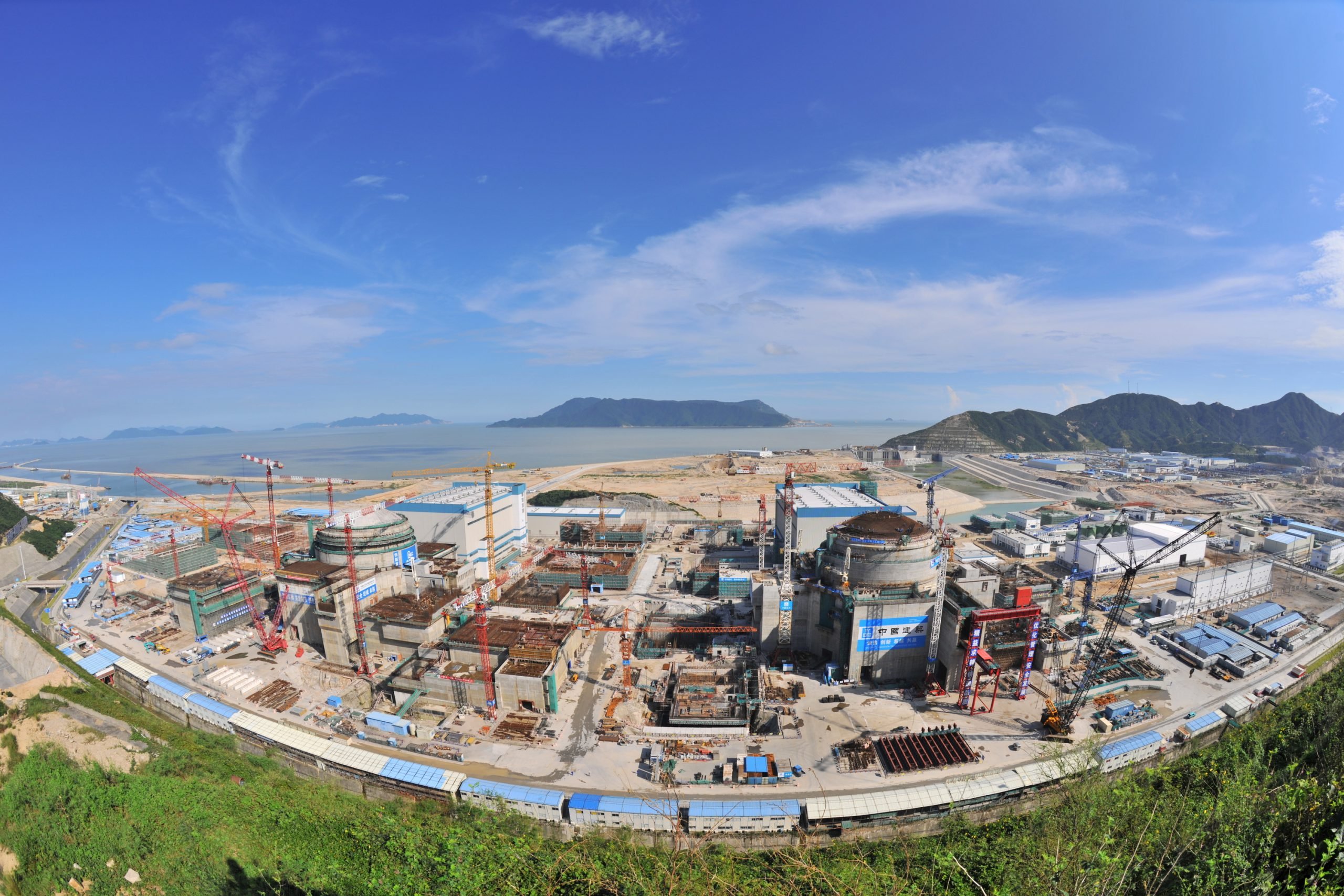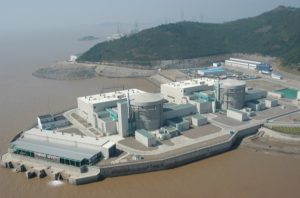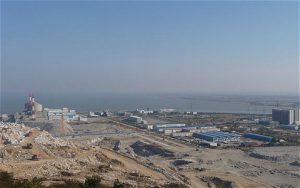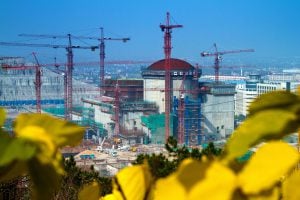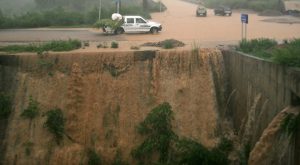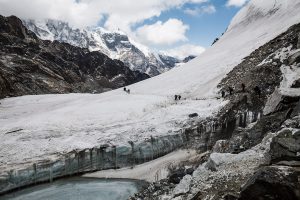Following the Fukushima nuclear disaster, and wider concerns over the safety of Chinese nuclear facilities, China’s central government suspended its consideration of proposals for construction of nuclear power plants at inland sites. But in the last couple of years, pressure has been renewed to build nuclear plants at sites away from the coast.
Beijing is now mulling over the decision to build new nuclear plants inland as an alternative to coal power, which has been the cause of disastrous air pollution in parts of the country.
As we have argued elsewhere, there is a growing tension between the government’s plan for rapid expansion of nuclear power and its commitment to safety. The final decision over inland nuclear construction will decide how this tension is resolved.
For now, Chinese policymakers face a risky decision. All of China’s nuclear power plants are currently located in coastal provinces. But in the second half of the last decade, plans were drawn up to start construction of nuclear power plants in inland areas.
The renewed pressure on the central government to reintroduce this plan is coming from local, provincial and county-level governments. The latter argue that they would benefit from greater tax revenues and economic growth generated by future nuclear plants, built and managed by State Owned Enterprises (SOEs), such as China National Nuclear Corporation and China General Nuclear Power Corporation.
In Hunan province, for example, the general manager of the Hunan Taohuajiang Nuclear Power Company, Zheng Yanguo, told reporters in September 2014 that an investment of 70 billion yuan (US$11 billion) in the Taohuajiang nuclear power plant would return GDP growth of over 100 billion yuan to Hunan, and generate annual tax income of around 15 billion yuan.
At the March 2015 National Party Congress, delegations from Hunan and Hubei provinces called upon the central government to restart construction of inland power projects at the beginning of the 13th Five Year Plan (2016-2020).
Further adding to these pressures to restart inland nuclear construction are the central government’s own ambitious nuclear expansion targets, which are increasingly seen as requiring the opening up of inland sites.
So why is the location of inland plants so controversial? It stems from the fact that inland nuclear power plants pose far higher risks to nearby water sources and to the people dependent on these resources than comparable coastal plants.
Water worries
Water is critical to the functioning of nuclear power plants. Nuclear reactors circulate large quantities of water through their radioactive cores in order to remove the tremendous amounts of heat produced.
For each hour of operation, a typical 1,000 megawatt nuclear reactor has to pull in (or withdraw) about 170,000 cubic metres of water from some external source. Of this, about a thousand cubic metres evaporate and the rest of the water is returned to the external source at a higher temperature.
This is why nuclear reactors are always located near a large body of water—the ocean or a large lake or river. By contrast, ‘combined cycle ‘ natural gas plants withdraw only about a quarter of what a nuclear plant does and the net amount of water that would evaporate from a natural gas plant is about 40% of the evaporation level of a nuclear plant.
Wind and solar photovoltaic plants use only very small amounts of water, such as for cleaning or panel washing, and thus have negligible impacts on water resources.
Water is also critical in the event of a nuclear accident, as was demonstrated during the March 2011 Fukushima disaster. While at Fukushima, there was no shortage of water outside the reactor, it was not possible to circulate this water through the reactor—and therefore remove the heat being generated there—because there was no electricity available to run water circulation pumps. The result was a nuclear meltdown and eventually the dumping of enormous amounts of radioactive materials into the Pacific Ocean.
In the event of an accident, nuclear plants located far from the ocean would have to discharge their effluent into a river or a lake. In China, where 70% of rivers and lakes are already contaminated according to the World Watch Institute, this could be disastrous.
Climate change is only making the situation worse. Globally, the number of days per year when inland water body temperatures are too high to effectively cool a nuclear reactor are increasing.
Finally, even without an accident, the sheer amounts of water needed by nuclear plants make it unsuitable for inland locations in China. Water availability is already a big concern—the per capita availability of renewable freshwater is only a third of the global average. Consulting company McKinsey estimates that demand for water in China will increase by 61% between 2005 and 2030 and outstrip supply by 25% at the end of that period.
Holes in the argument
In China, pro-inland expansion groups argue that there is a paucity of coastal sites; that profits inland are favourable; that new reactor designs “can avoid Fukushima-like catastrophes”. They add that nuclear power plants have a role in clearing smog and improving air quality because, unlike coal-fired power stations, nuclear plants do not emit smoke or various chemicals.
However, each of these arguments is only partially valid. For instance, the provinces where inland nuclear plants are proposed are not necessarily those most threatened by air pollution. Furthermore, all nuclear reactors can undergo catastrophic accidents, even the so-called third generation ones. These reactors have all of the same fundamental ingredients that made possible the earlier accidents at Chernobyl and Fukushima: a complex technology with large quantities of radioactive materials at high temperatures and pressures, and where even small errors can quickly spin out of control.
Although the nuclear industry uses a technique called probabilistic risk assessment to argue that the likelihood is very small, there are serious problems with this methodology and its results are simply not reliable.
Local opposition
Plans for inland construction have met resistance from citizens.
In the aftermath of Fukushima, opposition to the plant erupted in the adjoining Anhui province. The government of Wangjiang county, which is directly downstream from the proposed Pengze site, publicly accused the Pengze project of “falsifying its EIA [Environmental Impact Assessment] report,” and objected to Jiangxi province’s failure to consult its provincial neighbours before deciding where to site the plant.
If the Pengze project goes ahead, Anhui faces the risk of nuclear contamination in the event of an accident, but would not enjoy the majority of any economic or energy benefits from the plant.
While the level of opposition in Anhui is unprecedented, it comes in the wake of a significant increase in the Chinese public’s perception of risk from nuclear facilities, following the Fukushima disaster. This concern is also shared by some elite, retired nuclear experts. More generally, it has been reported that many Chinese people are nervous about the prospect of large nuclear expansion.
Five days after the Fukushima nuclear disaster started, China’s State Council stated: “Safety is our top priority in developing nuclear power plants”. As we approach the fifth anniversary of Fukushima, it is worth remembering that just talking about nuclear safety is not enough. If safety is indeed the top priority, it should be demonstrated through firm decisions. Some of these decisions could result in slowing down or limiting nuclear construction.
A ban on inland nuclear construction would be a good start. It would make clear that China’s central government is willing to put the lives and livelihoods of its citizens above the economic interests of local governments and SOEs.
